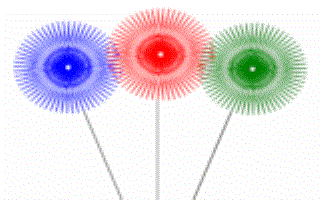Ada Lovelace was an English mathematician and writer, born in 1815, and she is often regarded as the world’s first computer programmer. She lived during the Victorian era in England, and was the daughter of the famous poet Lord Byron and his wife, Lady Byron. Ada's life was far from ordinary; she had a passion for science and mathematics from a young age, which was encouraged by her mother. This was unusual for women at that time, as they were often not given the same educational opportunities as men. Despite these challenges, Ada was tutored in mathematics by some of the leading thinkers of her day, including Charles Babbage, an inventor and mathematician who designed early versions of a mechanical computer.
Ada Lovelace is best known for her work on Babbage's invention, the Analytical Engine, which was one of the first concepts of a mechanical computer. She was not only able to understand the workings of this incredibly complex machine but also recognised its potential beyond mere number crunching. Ada wrote a detailed set of notes about the machine, which included an algorithm designed to be carried out by the engine. This makes her one of the very first people to see that a machine could do more than just arithmetic – it could follow a sequence of operations, which is a key idea in programming. Today, this links directly to computing topics that students learn about in school, such as algorithms, sequences, and even the basic concept of coding.
In addition to her contributions to mathematics and computing, Ada Lovelace had a great interest in a variety of other subjects. She was fascinated by science, particularly in how mathematics and imagination could work together to predict and explore new possibilities. She wrote about how a computing machine might be able to create music if given the right set of instructions – an idea that was way ahead of her time. Ada was also a thinker who could bridge the gap between scientific disciplines and the arts, making her an inspiration to people who are interested in multiple areas of study.
Ada Lovelace’s contributions are especially important because they show that ideas from one area of life can lead to unexpected discoveries in another. She was a visionary who imagined computers doing things far beyond what anyone else in her era could see, and she did this at a time when women were largely excluded from the sciences. It’s interesting and inspiring to learn about Ada Lovelace because her vision has helped shape our modern world. She reminds us that curiosity and imagination, combined with a love of learning, can lead to incredible discoveries that can change the world.

Appreciate the work of Ada Lovelace by trying some of the maths that this mathematician is known for.
There is an activity called Online Logo that you could try right now. An online version of the Logo programming language with 30 mathematical challenges.
So there's no better time than the present to learn some mathematics from the past: let's Go!



